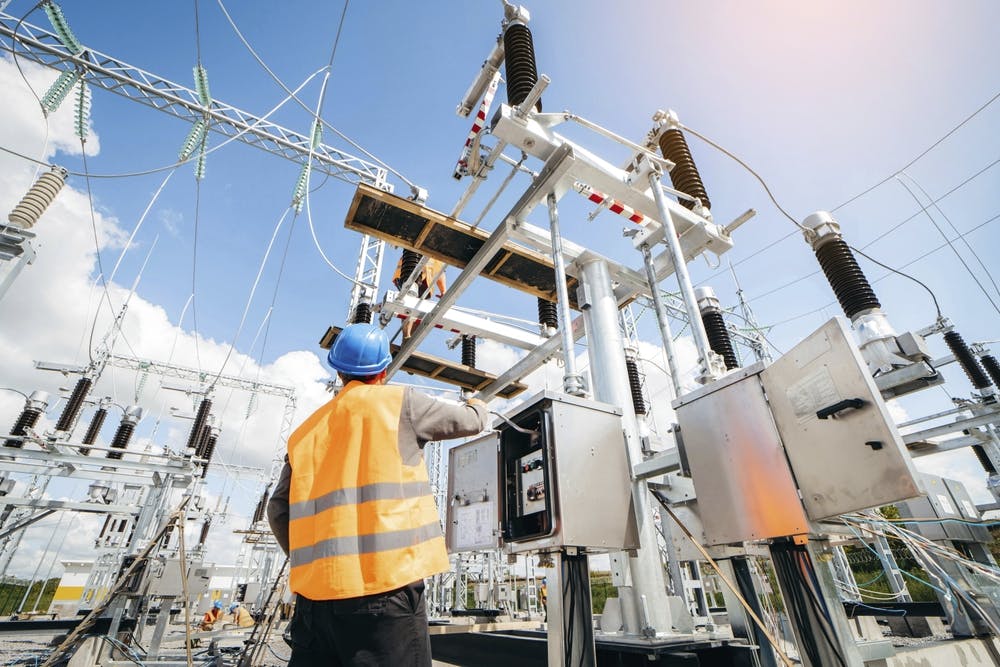All in the Details: Will the American Jobs Plan Drive Tech Innovation?
Smart federal investments in technology and R&D are necessary for advancements in the digital era.

Up next on the legislative docket for the Biden-Harris Administration and Congress are negotiations on a major infrastructure bill to spur an economic recovery. While the American Jobs Plan proposal has sparked a heated political debate on what exactly “infrastructure” means, there is broad consensus across party lines that in the 21st century our nation’s digital infrastructure is just as important as our roads and bridges. President Biden recognized the shift in priorities, saying “we’re in the midst of a fourth industrial revolution of enormous consequence” and proposing over $200 billion in tech-related investments.
But the devil is in the yet-to-be-revealed details. Increasing budgets without a modern approach will lead to only marginal improvements to the status quo. To drive fundamental change and technological progress for a generation, the bill should address three crucial areas.
Make the US a leader in smart infrastructure
The construction industry is one of the slowest adopters of modern technology because of its decentralized nature and mismatched incentives. It would be a massive missed opportunity if the proposed $621 billion in transportation infrastructure is spent on paving streets and building bridges without giving modern technology a second thought, continuing the trend of U.S. underinvestment in research and development (R&D), and smart infrastructure.
The opportunities in tech are enormous. Connected cities and highways with modern sensors and communications can cut traffic-related deaths to close to zero in the not-too-distant future. Improved IT infrastructure can help public transportation networks better serve marginalized communities. Leading tech startups in the construction and infrastructure space — like Fieldwire, Unearth and Sitetracker, just to name a few in Dcode’s accelerator portfolio — create huge cost and efficiency savings that could significantly increase the impact of each dollar invested in infrastructure and modernize our construction sector as a whole.
It would only take a fraction of the total spending proposed to transform the U.S. from lagging behind peers in smart infrastructure to becoming the clear world leader, and the American Jobs Plan is the opportunity to make this happen.
Reinvent R&D using best practices from venture capital
President Biden and congressional leaders have rightly focused on bringing investments in research and development back up from their current historic lows. But simply adding some zeros to the amount of dollars invested in certain areas would risk throwing good money after bad. Our government’s investment in research and development has not changed significantly in over 40 years, when the private-equity community and corporate R&D investment programs barely existed.
It is time for the government to adopt new best practices from the private sector for R&D. We should be making investments as if it’s 2021, not 1980.
The approaches taken by the Air Force’s AFVentures program and the Defense Department’s Defense Innovation Unit provide a good starting point for how the government can recognize and leverage private-sector investment in order to improve outcomes and get more bang for the taxpayer buck with tech investments. Another is a proposal from Brookings to fund R&D via capital investment with equity ownership by the government, similar to the approach pioneered by the CIA’s venture arm In-Q-Tel.
Structurally reform government procurement
Hundreds of thousands of civil servants across the federal government, states and municipalities will be charged with allocating contracts and grants to implement the goals of the infrastructure bill.
By expanding investment in specialized centers of excellence within government and modernizing tech and procurement training programs for government officials, the bill can ensure that the proposed $2.3 trillion in federal spending is used more effectively.
Dcode has worked with hundreds of government leaders through workshops and training programs to help them change the way they do business. Modernization training and enablement for leaders, operators and procurement professionals in government is a key next step in institutionalizing these efforts.
With the right investments in these areas, Congress has the opportunity to change our nation’s tech infrastructure for generations to come.
Nate Ashton is managing director for public policy at Dcode and policy advisor at The Alliance for Commercial Technology in Government, where he focuses on policy reforms to improve government’s use of emerging technologies. He previously led Dcode’s tech sector engagement and accelerator programs, connecting emerging technologies, the U.S. government and industry stakeholders across areas including artificial intelligence, cybersecurity, space tech and more.
This is a carousel with manually rotating slides. Use Next and Previous buttons to navigate or jump to a slide with the slide dots
-

Cyber Incident Reporting Regulation Takes Shape
An upcoming CISA rule aims to harmonize cyber incident reporting requirements for critical infrastructure entities.
5m read -

Connectivity Drives Future of Defense
The Defense Department is strategizing new operating concepts ahead of future joint force operations.
8m read -

5 Predictions for AI in Government Technology
Agencies are setting plans in motion not only to integrate AI into their enterprises, but also ensuring the data that power these systems are fair.
41m watch -

Agencies Meet Key AI Goals Amid Call for More Experimentation
Federal leaders call for prioritizing artificial intelligence and its applications to critical cybersecurity and workforce initiatives.
7m read








